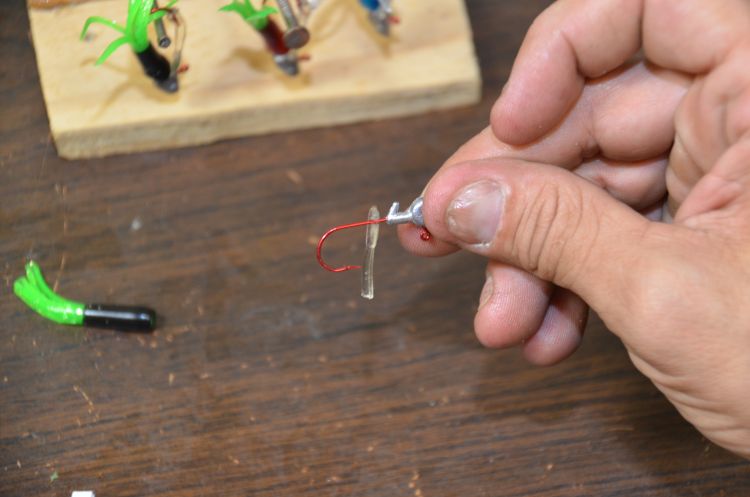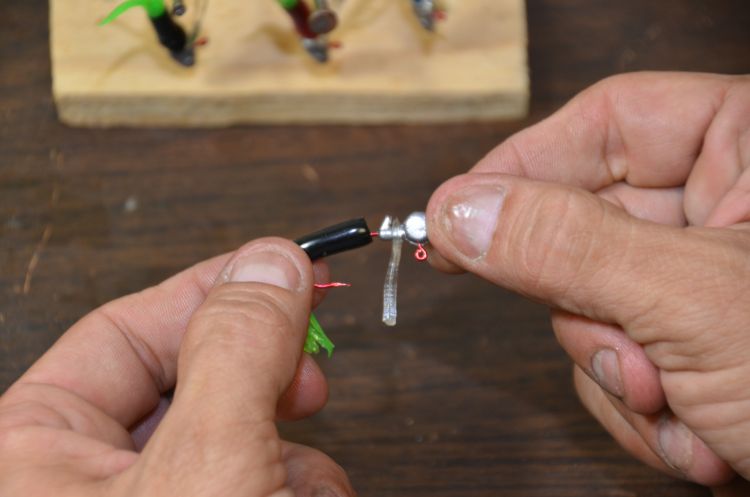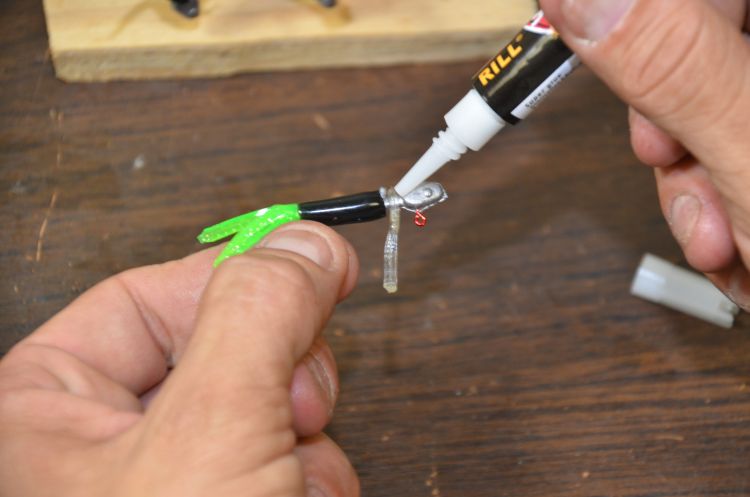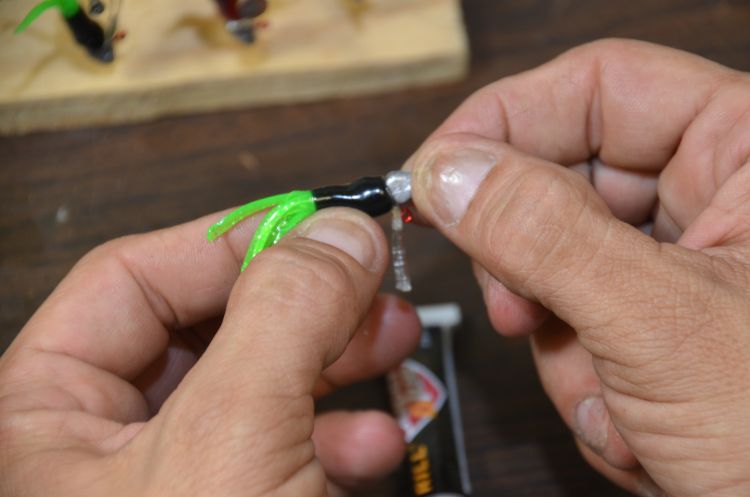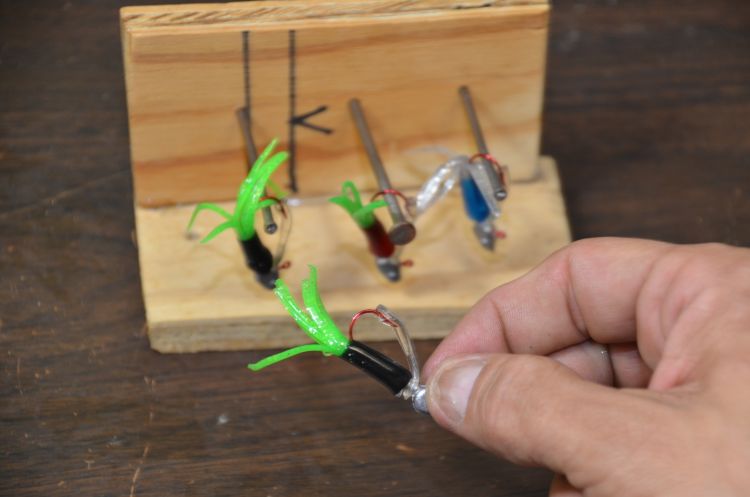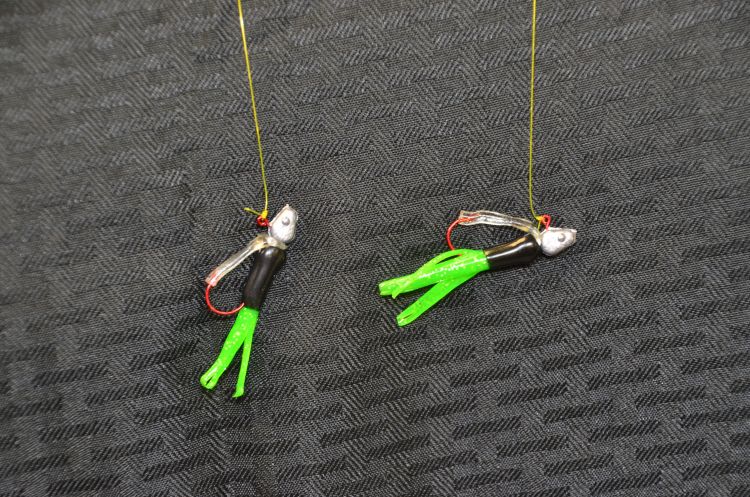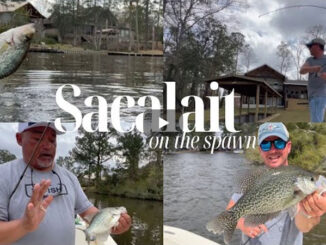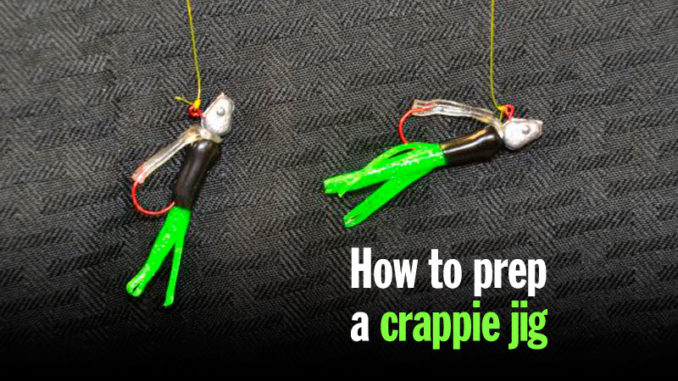
Everyone who knew J.B. Salter Sr. agrees he was a particular man.
“He wanted you to do things 100 percent right at all times, and if you didn’t he let you know you were doing things wrong,” Jeremy Gremillion said.
J.B.’s son Blaine agreed.
“There would be dire consequences for trying to fish with him if you didn’t have your jig set to fish level before trying to use it,” he recalled.
One of the things the elder Salter insisted on was that anyone who fished with him have 10 each of their favorite colors of tube jigs prepped before the trip. Each prepped jig is good for eight to 10 fish.
“This is not something that you want to do on the water,” Blaine emphasized.
How to ensure you’re ready to switch lures
1) Push the point of a jighead hook through the small hole in the wide end of a stick guard (aka weed guard)
2) Push (not pull) the stick guard over the keeper on the neck of the jighead. Insert the point of the hook into the solid end of a tube and push it to, but not over the keeper.
3) Add Super Glue to the area of the keeper.
4) Quickly push the tube over the keeper and hold it in place for a moment.
5) Insert the loose end of the stick guard on the hook’s point and hang the completed jig, head-down to dry for several hours.
6) For use, the jig must be tied to the line with a tight knot, which should be placed at a 45-degree angle back toward the skirt of the tube to allow the jig to lie horizontal for fishing. The knot is correctly placed on the jig on the right and incorrect on the jig on the left.
